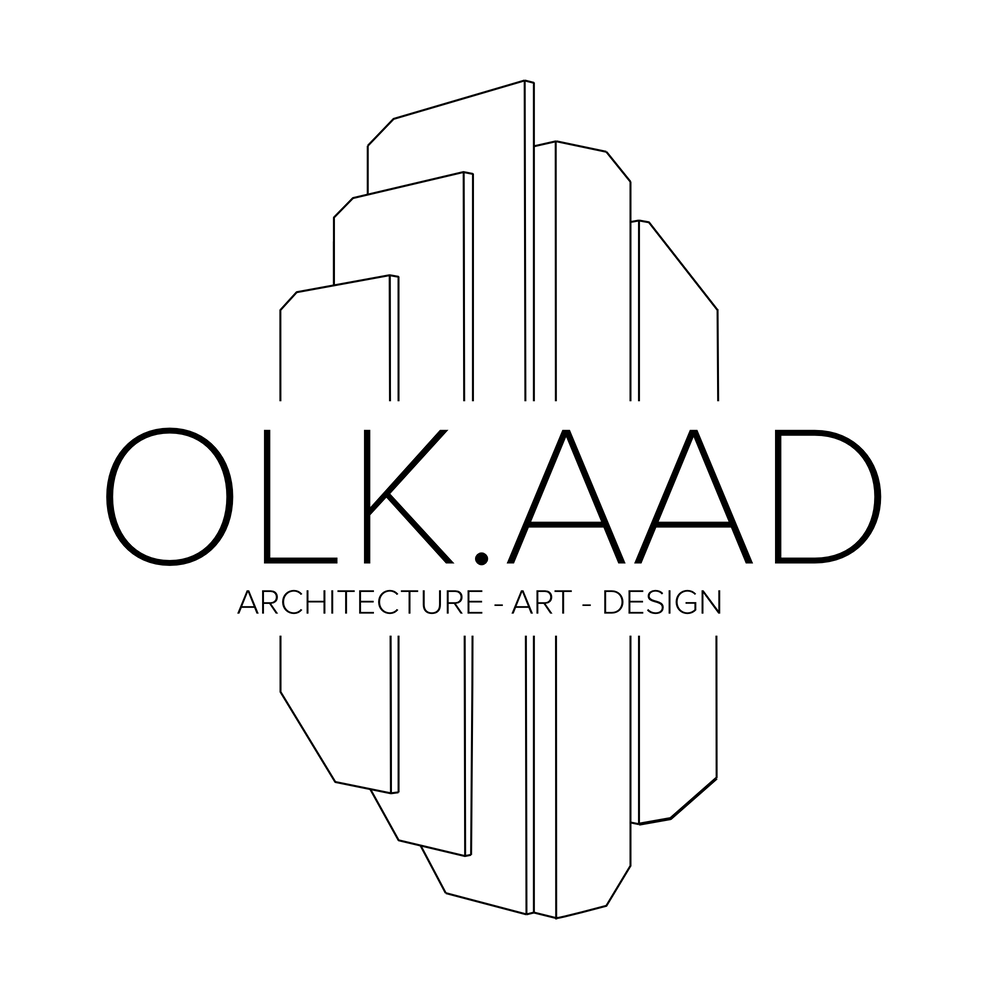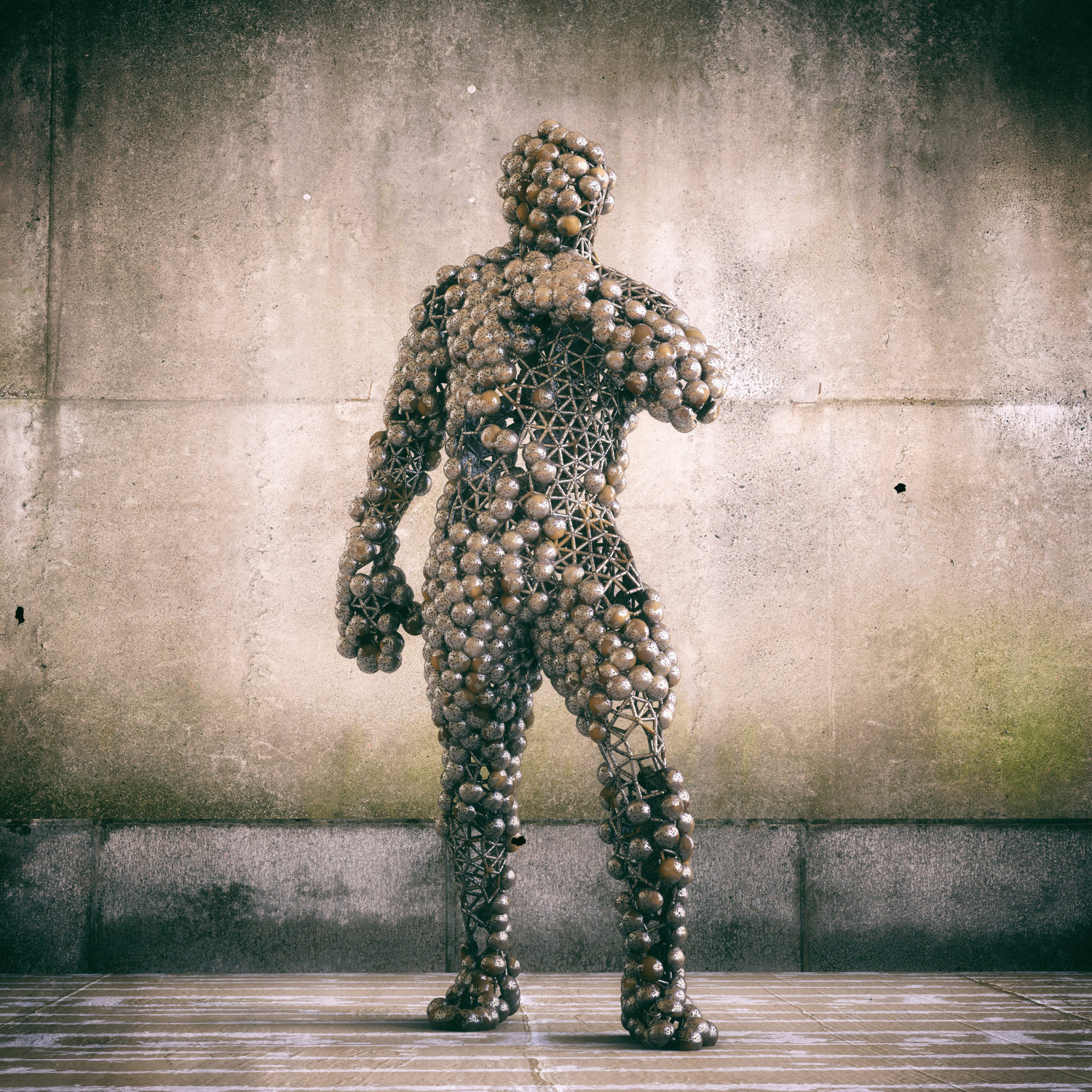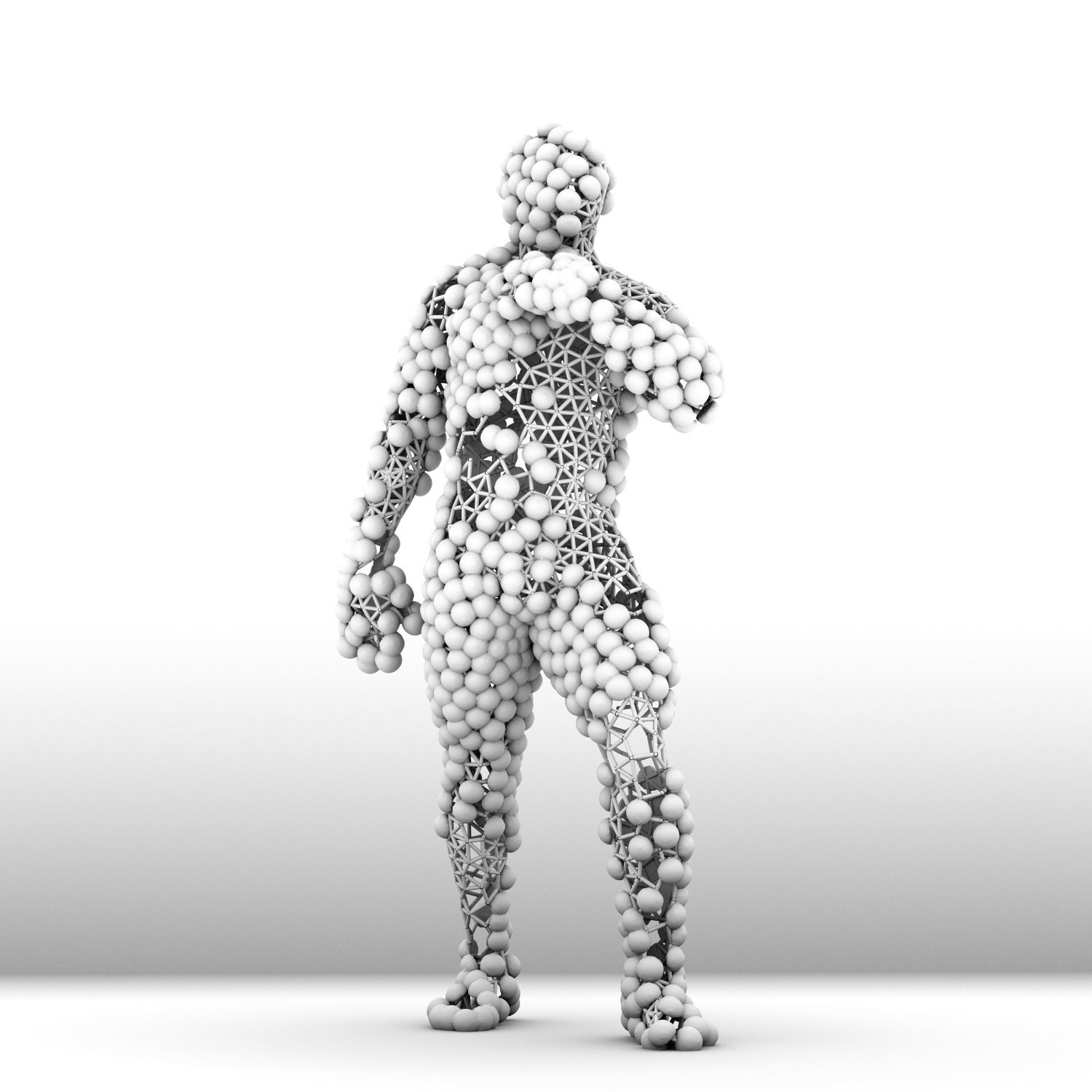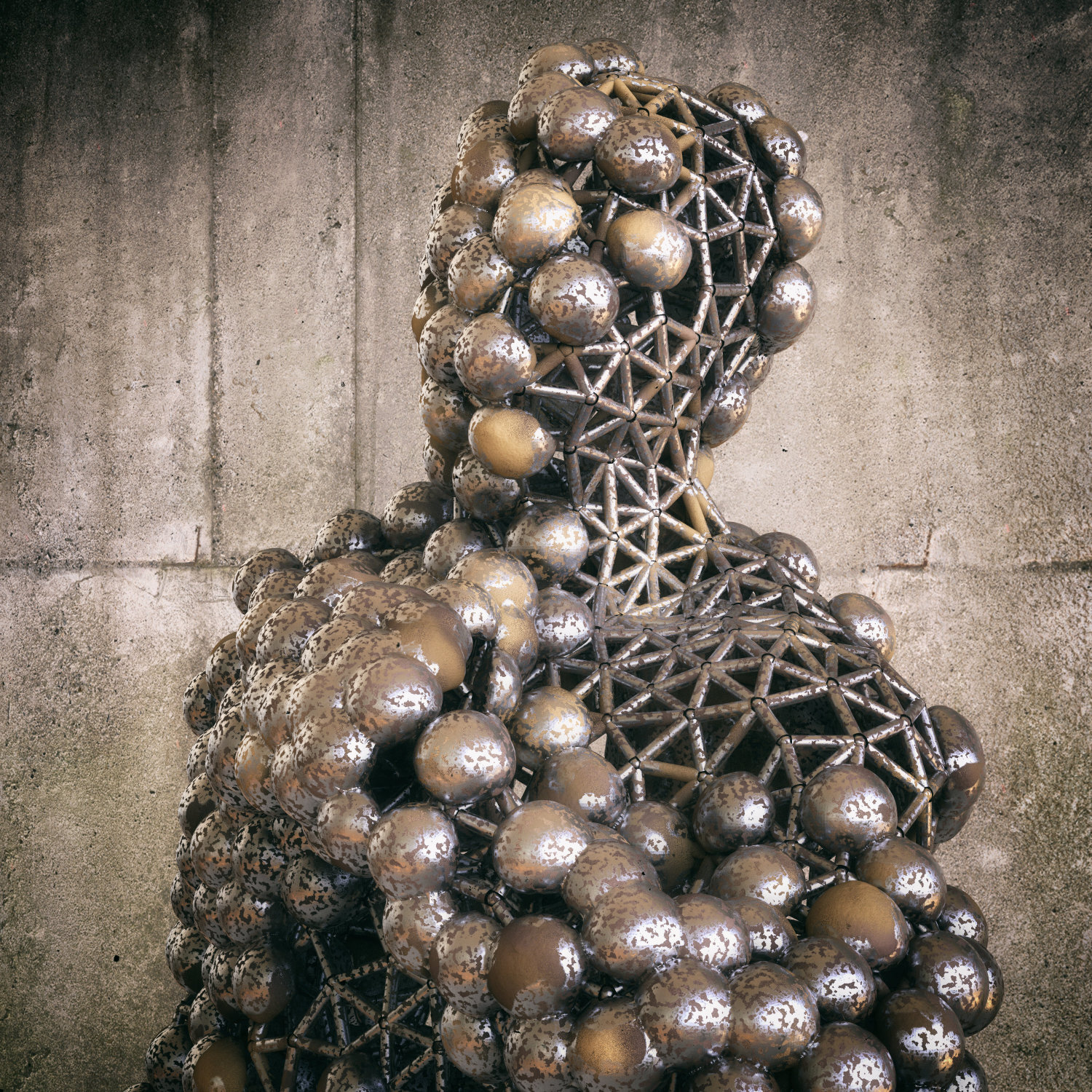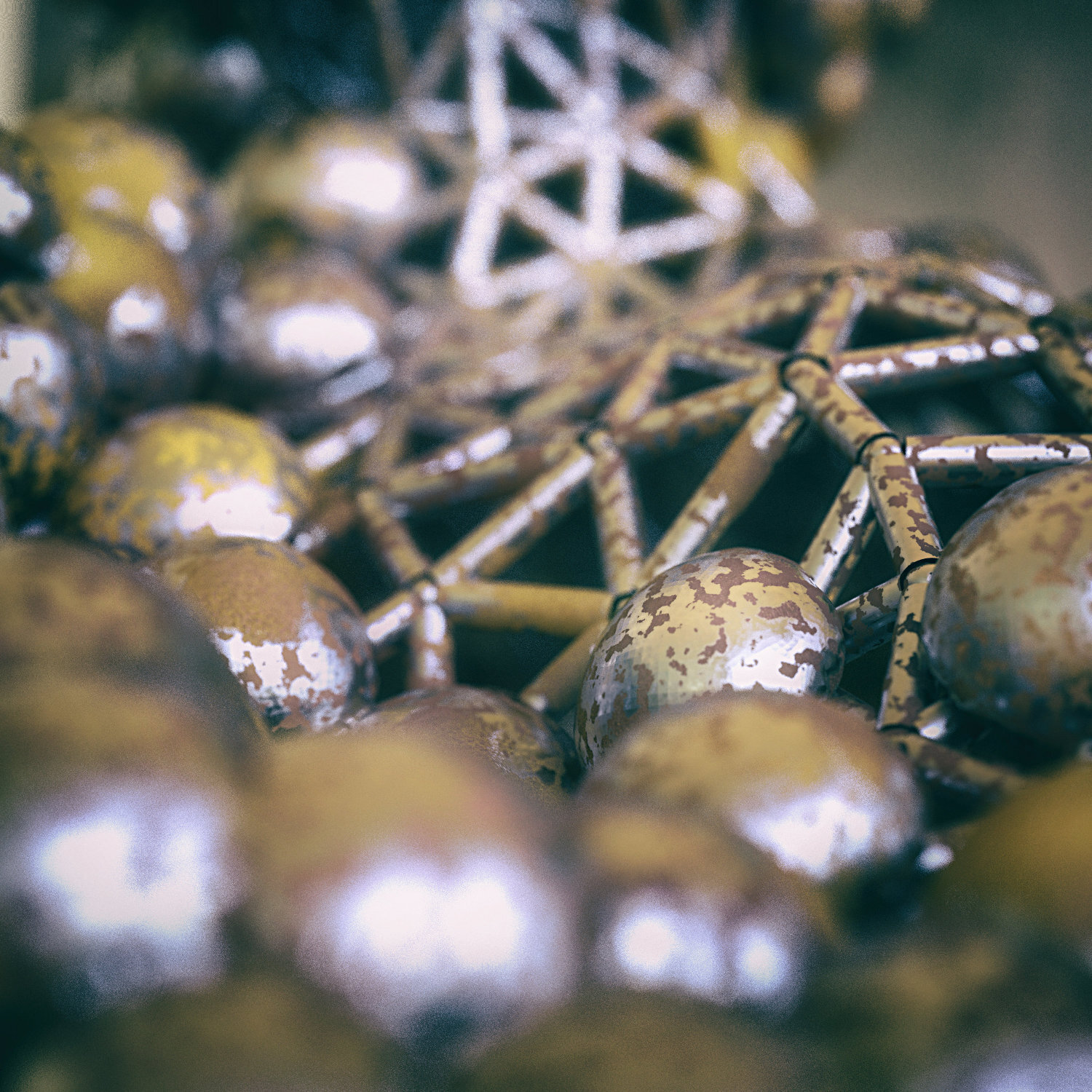ADVECTION SCULPT I
Started getting back into Houdini the past couple of weeks and each time I return to it I am reminded as to how awesome of a creative environment is. I end up getting lost and experimenting with different nodes and parameters and being completely surprised with the morphological outcomes.
This particular setup is fairly simple
A scan model of a posed figure was imported as an obj
Areas of affect were painted unto that mesh
The affected area of the mesh was converted to point data through a scatter node
The points had spheres copied unto them using the Copy-to-Points node
Those spheres were then passed through a solver where they were converted to a VDB volume and then advected. The main model mesh was also converted to a VDB and merged with the advected spheres to facilitate a better simulation
The simulation was run and stopped at the point where there was an intuitively good-looking result in terms of growth
The figure model mesh was then separately converted into points again using the Scatter node,
A connect adjacent pieces operation was run on that collection with the parameters tweaked until the lattice shell looked appealing and clean
All separate components were then converted to meshes and exported to objs for rendering in Keyshot
The overall premise behind this idea is the expression of the human form through different object primitives and toying with the concept of structure and growth. Whereas, we as people, have internal skeletons, the character in this scenario has their general form converted to the structural frame which then serves as a scaffolding for a bulbous and spreading growth which grows over them.
The more I experiment with different mediums and processes (whether those are computationally generated morphologies, or traditionally rendered figure drawing), the more I’m seeing novel ways of expressing traditional communication paradigms. Here is a figure with its structure subverted. Here is an outline of a figure but conversely to the process of drawing an outline and then filling in the form within it, the actual outline serves as the form.
